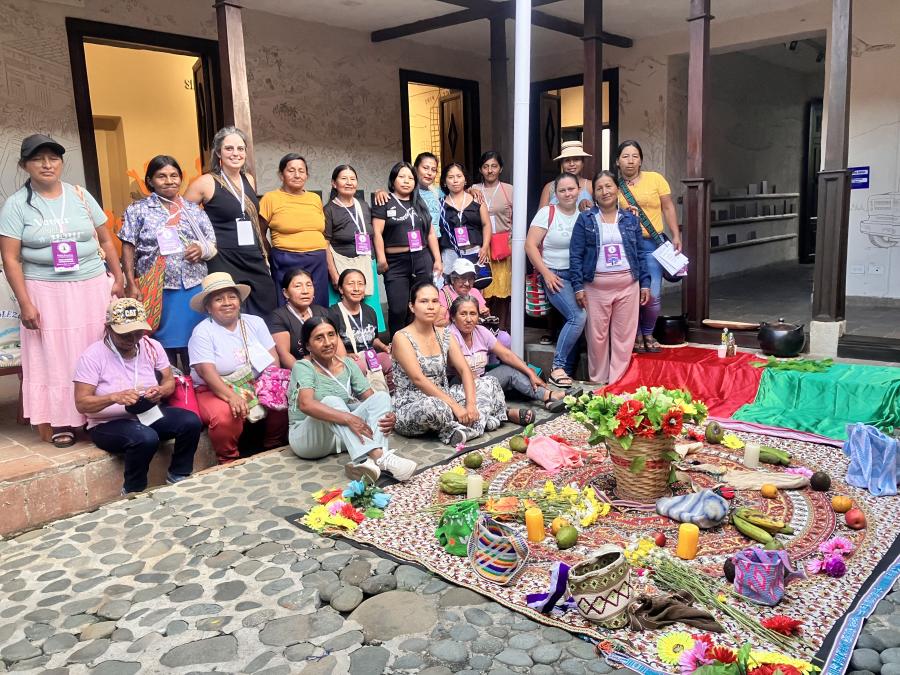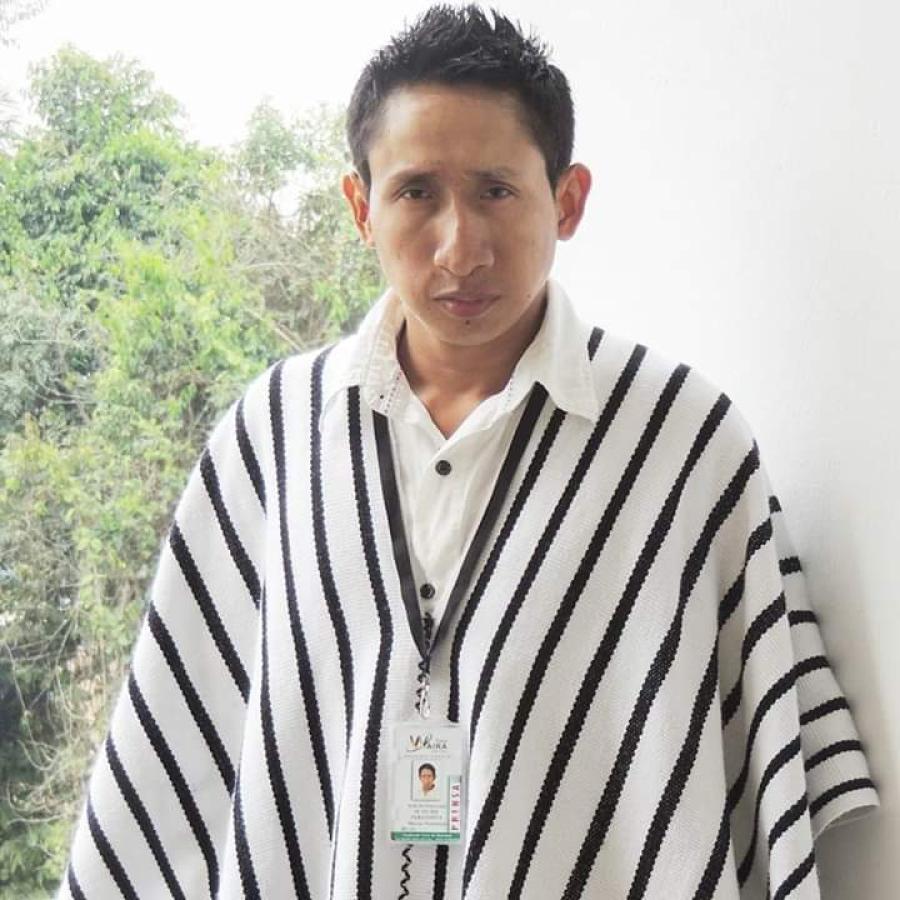When most people think of reparations, they tend to think of things like money, land, or legislation. Certainly those are useful tools for helping victims regain their sense of dignity and move forward. But human rights violations tend to do much of their damage in the social and psychological realm, so physical reparations don’t really address the problem. If reparations are to be effective, they need to take into account the deep personal, family, and community damage caused by violations.
To understand the damage done, it is essential to understand the nature of indigenous cultures. For example, most indigenous communities are organized around individuals who have specific roles, including government representatives, spiritual leaders, midwives, elders, and so forth. Their rules and values reflect their unique worldview, which, for most indigenous peoples, includes an interactive relationship between the community, nature, and ancestors. Most of the activities of daily life are accompanied by rituals aimed at maintaining that relationship; for example, ceremonies for sowing the land or cutting down a tree. Cultural practices relating to ancestors are particularly important because of the reciprocity existing between living and dead persons. The community depends on the good will and help of ancestors through dreams and spiritual paths, and the ancestors need to be honored through appropriate ceremonies and maintenance of their burial places. Perhaps the most salient characteristic of indigenous communities is that they are collective. Their land and resources, values, and activities—their identity—are all a function of the group, not individuals.
Serious violations of human rights, such as forced disappearances, torture, sexual violations, or massacres (as have recently happened in Colombia, Peru, and Guatemala), affect the entire group, and the whole social structure of the community is damaged. When an indigenous leader is executed or tortured, the rest of the community feels that if another member succeeds him or her, the new person will experience the same fate. The community often sees no choice but to renounce the cultural practices or social needs that the leader was fighting for and that led to his or her death—the government is simply too powerful. Elders in a community tend to be the ones teaching the young people about their history and spiritual beliefs, and they tend to be the ones who settle family and community disputes, so when they are killed by government forces, it has a particularly devastating effect on the group. Massacres and military actions also destroy physical culture, including such things as grinding stones, crops, and family heirlooms, which, beyond their material value, are essential for symbolic and ancestral relationships. Loss of material property not only eliminates the family’s means of subsistence, but also their perception of control over their own environment.
Forced disappearances, extrajudicial executions, and massacres, since they preclude the possibility of burying victims in sacred places and respecting traditional customs, can destroy the traditional mourning processes and break the relations between the living and the dead.
Rape can lead to family destruction in several ways. Violated women generally have great difficulties being re-accepted by their families and their husbands. Also, if the woman is not married when she is violated, in many cultures she will very probably be rejected by men and will not have any chance of establishing a family, a very severe fate in a cultural context where marriage and family are the central elements of social order.
In countries where there is military conflict between rebels and government forces, there is often a special consequence for indigenous peoples. For example, during the war in Guatemala in the 1980s, indigenous communities were forced to be part of the so-called patrullas de autodefensa civil. These were groups of men, operating under military authority, who had to patrol night and day looking for insurgent militias. They were threatened with death if they did not provide names of persons who sympathized with the guerrillas, and many men gave names of presumed rebels knowing that those people neither participated in nor supported insurgent forces. This situation led to the breakdown of traditional rules and provoked suspicion between neighbors and families that continues to this day. Twenty-five years later families know who denounced a dear relative, leading to his torture and death. There is also conflict between community members who want reparations and those who just want to forget what happened.
Beyond these collective consequences there is a long list of damage done to individuals, including post-traumatic stress disorder, sleep disorders, disrupted grief, and other severe health effects. And there are wounds that time does not heal. The destruction of traditional rules and leadership structures, the rupture of cultural practices, and the attendant suspicion and terror are transmitted to new generations. The family’s history is full of gaps and silences about the traumatic events that happened, and children grow up in a sad and hostile environment.
As severe as it can be, the damage done by states does not end when the violation stops. In many cases, the people responsible for the violations are never investigated or punished, and their ongoing impunity lends a sense of validity to the abuse, causing new psychosocial damage. If the people who committed these acts are not punished, responsibility for what happened can be attributed to victims, who are then stigmatized and excluded from social life. The larger society thinks that they must have done something terrible for something so extreme to happen to them. Victims continuously ask themselves, “Why me?” Because of the impunity of perpetrators and the diffusion of historical memory, there is no answer to this question, and responsibility is shifted onto the indigenous people themselves or their own family or social background. At the same time, the lack of justice sends the message that people in power may do whatever they want without being sanctioned, so the abuse may happen again at any time. All this produces in victims a sense of loss of control over their lives and a constant state of fear.
Because of the physical and psychological damage that often accompanies human rights violations, reparations need to include health services, including mental health services. And it is essential to align the services with the people receiving them. The indigenous worldview in most cases conceives the human being as part of a larger reality, combining physical, spiritual and psychological components. By contrast, the concept of health used in the dominant cultures of most countries is based on a biological, individualistic, health-oriented, and clinical conception; treatments are thus only directed to relieve visible symptoms of the illness with respect to a definite patient, ignoring his/her cultural and social context. This perspective does not fit with the indigenous worldview, in which the strengthening of social networks and reciprocity with nature and ancestors are key elements for the recovery of the patient. Treatment involves natural plants and appropriate rituals; in the great majority of cases they are collective rituals. Indigenous practice does not imply abandoning Western medical and pharmacological treatments, but rather searching for complementarity between the two systems.
Appropriate mental health treatment is essential to reparations for indigenous peoples. But one cannot pretend to improve mental health of people who experienced grave human rights breaches through individual or clinical isolated group programs if the surrounding society refutes historical facts or fails to bring responsible persons to justice. So health care needs to be combined with state actions that acknowledge the truth about the events that happened. Victims uniformly request that the facts of their human rights violations are made known to the rest of the society, as well as to their children and the children of the people responsible, in order to prevent such atrocities in the future. Articles, books, leaflets, small publications, paintings, videos or documentaries, stories, poetry, plays, radio programs, or truth and reconciliation programs are all appropriate vehicles for transmitting an accurate account of the past. In several Guatemalan communities, for example, young people have created small theater groups that perform plays based on the massacres committed by the government during its genocidal war against the country’s indigenous populations. When the vice-president of Guatemala went to apologize to the community of Plan de Sánchez in July 2005 as part of the Inter-American Court of Human Rights’ judgment, the community invited him to attend a performance by the town’s young people that dramatized the events of the massacre 23 years earlier.
Other forms of reparation aimed at promoting truth and the dignity of victims are monuments, commemorative names in public spaces, or commemorative days such as Sorry Day in Australia. It can also help to use the mass media to promote public awareness of and appreciation for indigenous culture.
These forms of public acknowledgement are essential elements of any reparations program to address the psychosocial affects of abuse. The pain of murder, assault, unfair imprisonment, and community destruction cannot ever be entirely removed, but a carefully designed and sensitive reparations program can restore a sense of dignity to indigenous peoples and give them the strength to move from being victims to being survivors.
Nieves Gomez is a community psychologist for Equipo de Estudios Comunitarios y Acción Psicosocial (ECAP) in Guatemala.
This article was adapted from the chapter titled “Indigenous Peoples and Psychosocial Reparation: The Experience with Latin American Indigenous Communities” in the forthcoming book Reparations for Indigenous Peoples: International and Comparative Perspectives, edited by Federico Lenzerini. The book will be published by Oxford University Press in February 2008 (ISBN-13: 978-0-19-923560-5).


